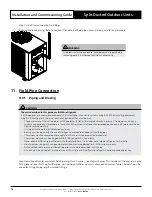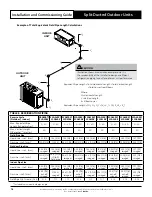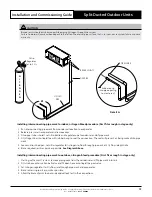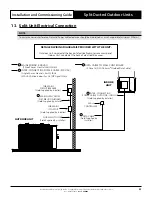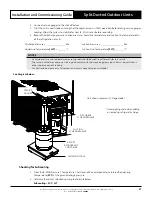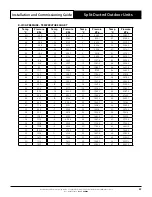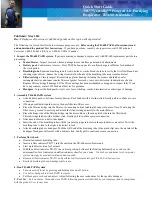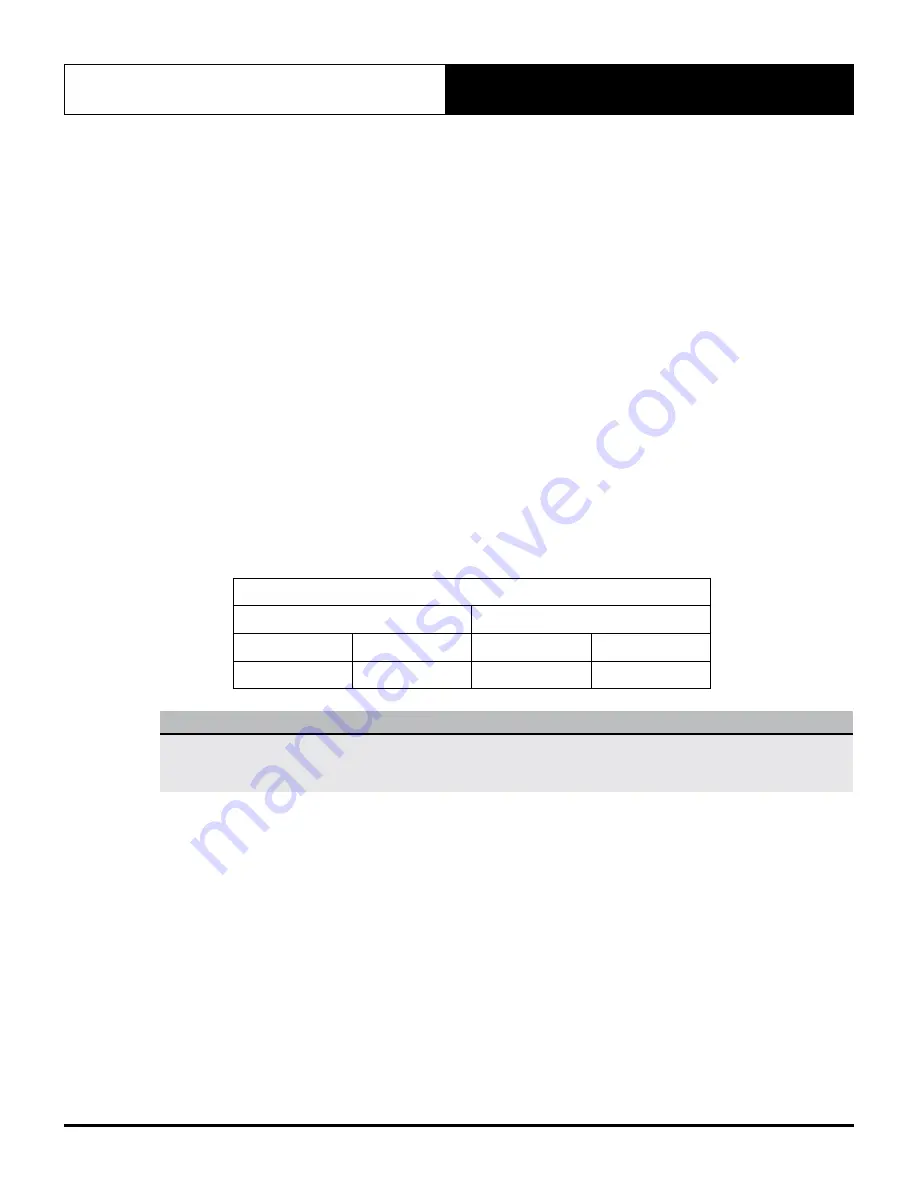
Installation and Commissioning Guide - Standard Commercial Split Ducted Commercial Outdoor Unit
Doc. No.0525-056
Ver. 7 220308
Installation and Commissioning Guide
Split Ducted Outdoor Units
28
3. If subcooling is within the range (see charging table), there is no need to add/remove refrigerant.
• If subcooling is lower than minimum, the system is undercharged, it is necessary to add refrigerant.
• If subcooling is higher than maximum, the system is overcharged, it is necessary to remove refrigerant.
Allow the systems to stabilise (15 - 30 mins) and repeat the steps 1-3 until subcooling falls within the range specified in
the Subcooling/Superheat Table below.
Checking for Superheat
Maintaining the correct superheat is important for ensuring the evaporator is achieving maximum capacity and
avoiding excessive liquid refrigerant returning to the compressor.
1. From the R-410A Pressure/Temperature Chart record the corresponding Saturated Suction Temperature
(
SST
) at the given suction pressure.
2. Calculate the system super heat using the formula below:
Superheat = SLT -SST
3. If superheat is within the range (see charging table), there is no need to add/remove refrigerant.
• If superheat is lower than minimum, it means that liquid refrigerant may be returning to compressor. It is
necessary to remove refrigerant.
• If superheat is higher than maximum, it means that refrigeration capability of evaporator is not fully
maximised. It is necessary to add refrigerant charge.
Allow the systems to stabilise (15 - 30 mins) and repeat the steps 1-3 until superheat falls within the range specified in
the table below.
Subooling and Superheat Table
Cooling
Heating
Subcooling
Superheat
Subcooling
Superheat
6 - 8
4 - 6
8 - 14
4 - 8
NOTES
The above subcooling and superheat recommendations are based on the following rated conditions:
• Cooling: 35
0
C DB outdoor, air entering indoor at 27
0
C DB / 19
0
C WB.
• Heating: 7
0
C DB / 6
0
C WB outdoor, air entering indoor at 20
0
C DB Nominal indoor airflow.



